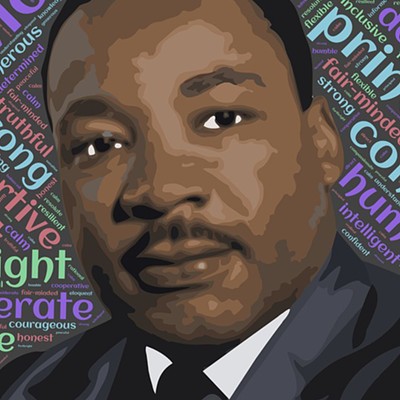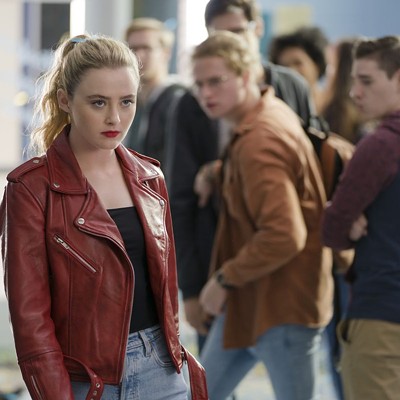THE GREY
**
After presenting Mexico City as the ultimate hellhole on Earth, Tony Scott's 2004 Man on Fire ended with a credit stating that the city was actually "a very special place." Sydney Pollack's 1993 The Firm assures us that Cayman Island officials look down on the sort of money laundering occurring in the film.
And best of all, Irwin Allen's 1978 The Swarm gave a shout-out to our buzzing buddies by adding a credit which noted that "the African killer bee portrayed in this film bears absolutely no relationship to the industrious, hard-working American honey bee to which we are indebted for pollinating vital crops that feed our nation." Unfortunately, no PSA announcement accompanies The Grey, which presents the often misunderstood wolf in such a vicious and uncompromising light that I expect Sarah Palin will see this film at least a dozen times.
Of course, all two- and four-legged creatures are fair game when it comes to presenting them as movie villains - even bunny rabbits and a slobbery St. Bernard had to play the heavies in Night of the Lepus and Cujo, respectively - and the wolves on display here are indeed intimidating. Granted, they often look like animatronic animals on steroids, but they certainly put the fear of God in the human protagonists.
The prey in The Grey is a group of oil-rig workers whose plane crashes in the Alaskan wilds. The no-nonsense Ottway (Liam Neeson), whom we first meet as he's sticking his gun in his own mouth (a wolf's howl distracts him from pulling the trigger), appoints himself leader and attempts to lead the other six survivors out of the wilderness - no small task given not only the punishing elements but also the savage wolf pack that's picking them off one by one.
To its credit, The Grey tries to add a little substance to its terror-tale premise, but Ottway's soft-gaze flashbacks to his long-gone wife and the religious chats among the men (complete with a scene where Ottway yells at the heavens above) only skim the surface of any true existential analysis.
And while there are a couple of good sequences focused on the brutal landscape, the man-on-wolf action is both fleeting and feeble - anemic enough that even Twilight haters might join Team Jacob rather than watch this shaggy undertaking.
THE WOMAN IN BLACK
**
Before they largely imploded in the mid-1970s, Britain's Hammer Film Productions spent two decades producing lush, atmospheric horror flicks, in the process re-igniting filmgoer passion for classic monster movies and making genre superstars out of Christopher Lee and Peter Cushing. Two years ago, the outfit returned to screens with the critically acclaimed, audience-ignored Let Me In, followed that with two barely seen releases, and now offer the decidedly more high-profile The Woman in Black, positioned as a true test of Daniel Radcliffe's drawing power outside the Harry Potter franchise. For the record, Radcliffe is fine; the film, on the other hand, is tepid enough to leave Dracula - the one who looks like Christopher Lee, of course - spinning in his grave.
Based on a novel (by Susan Hill) that had already been turned into a successful play and a 1989 made-for-British-TV film, this finds Radcliffe cast as Arthur Kipps, a widowed lawyer assigned to visit a remote village in order to settle the estate of a recently deceased elderly woman. In the film's best nod to vintage horror, the country rubes all view the newcomer with suspicion and do little to aid him in his task. The reason, it turns out, is that they believe the stomping grounds of the departed is haunted by the title apparition, an evil entity with a sweet tooth for tragedy and children. Both fascinated by the legend and fearful that it might has some basis in reality, Arthur opts to spend the night at the creepy mansion - and it's here where the film primarily jumps the tracks.
The best ghost stories are the ones that rely on careful exposition and a pervasive sense of mounting dread to unsettle audiences (The Others and The Orphanage being modern examples), but director James Watkins and scripter Jane Goldman abandon that approach shockingly fast. Instead, this is the sort of spook show that tries to manufacture scares by having something rapidly leap into the frame, startling both the protagonist and many viewers. Usually, it's a cat; here, it's everything but. Yet this sort of cheap thrill becomes predictable before long - Arthur investigates, relaxes, LOOK OUT!, investigates, relaxes, LOOK OUT!, etc. - and unlike the aforementioned simmering sort of supernatural cinema, it will have little shelf life (after all, to quote a great president, scholar and humanitarian, "Fool me once, shame on - shame on you. Fool me - you can't get fooled again.").
It's certainly nice to have Hammer back in business, but let's hope they nail down more promising projects than this one.


























